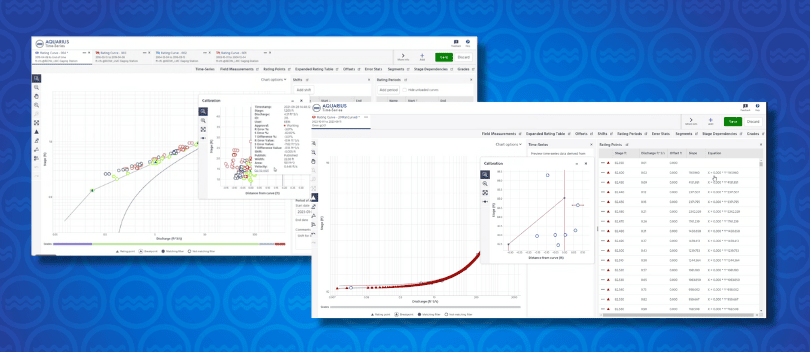
Watery Mud – Definitions, Communication & Obfuscation in Hydrometry
Is that muddy water or watery mud you are measuring?
There were several very good responses to the Clear as Mud post so rather than replying to each comment individually I think the topic is worthy of this new page. My reference to mud was deliberate. Watery mud is a geophysicist’s problem whereas muddy water is a hydrographer’s problem. We can easily tell the difference because of shape. Watery mud is lumpy.
Shape then, is a defining characteristic of hydrometry.
Every hydrographer understands the shape of what he/she is measuring intuitively. When measuring still water, the shape is a polygon with an elevation equal to the potential energy of the water surface. If we were to place 100 gauges within this perimeter they would all indicate the same potential energy (with variability introduced by turbulence and seiche). If this shape were not valid we would not be able to estimate reservoir capacity from the intersection of the ‘thing’ that we are measuring with the bathymetry of the reservoir.
When measuring flowing water, the shape of the ‘thing’ we are measuring is a line along which the sum of gravitational, pressure and kinetic energy is equal. If we were to place 100 gauges within a reach of river most of them would indicate a different sum of energy potential. Our stage discharge relation is defined with reference to the location of a very specific equipotential line. You can use data from any gauge positioned on this line to produce discharge from this relation but not from anywhere else in the river reach.
Gauge height is the elevation of a water surface at the exact point location of the gauge.
This elevation is referenced with respect to some datum assigned to the gauge. In our hypothetical still body of water with 100 gauges each of these gauges could be referenced to different datums providing different data while all measuring the exact same potential energy surface. How can they all be measuring the same geophysical ‘thing’ if they are all producing different data? By definition gauge height, stage, and water level are interchangeable terms so no wonder things get confusing when trying to share data.
Conversations amongst stream hydrographers are not too confusing because we are adept at quickly re-calibrating our understanding of the jargon based on context of use even if someone uses the same term differently. Having said that, I have found that using ‘water level’ is broadly understood to mean measurement of a still water surface (including groundwater); ‘stage’ is broadly understood to mean measurement of a flowing water surface (never groundwater); and ‘gauge height’ is broadly understood to mean measurement at a specified point location relative to a specified datum. Gauge height can be thought of as a ‘technique’ for calibrating the potential energy of the equipotential line we are interested in measuring.
Where communication gets really difficult is when talking to other groups.
For example, CUAHSI and OGC are two groups deeply engaged in development of techniques and standards for hydrometric data sharing. CUAHSI is dominated by research hydrologists and OGC is dominated by computer science engineers. These groups depend on having precise definitions to work from for the purpose of developing cutting edge technology. The notion that the ‘thing’ we are measuring is an equipotential line with inherent shape has profound implications for intersecting time-series data with geophysical features such as water courses, water bodies and watersheds but this concept is missing from the conversation – by definition.


